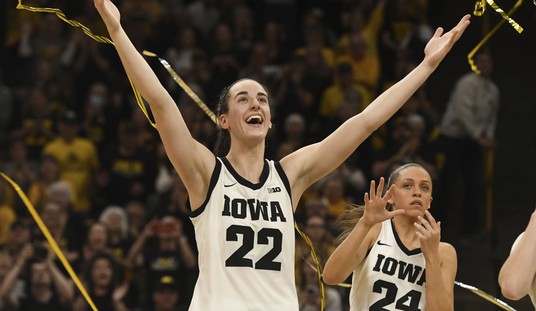
March 15 lived up to its billing as Armageddon Tuesday, at least for Marco Rubio, who dropped out of the race after losing his home state of Florida, and badly. But while Donald Trump ran the table outside of Ohio, he remains the weakest frontrunner in Republican history, drawing a smaller share of the popular vote than Mitt Romney, John McCain or Bob Dole at the same stage. Let’s take a look at what happened on Tuesday, including both a brief epitaph for Rubio and an analysis of the survivors, and where we go from here. Trump is only a little more than halfway to the delegates he needs, and is still behind the pace; he can still be beaten, but the only way that happens is if everyone who wants to stop Trump unites behind Ted Cruz.
The End of Rubio
As I noted previously here and here, Rubio was running a fundamentally different campaign from Cruz, Trump and Kasich: while they were all appealing to particular factions within the GOP and/or regions within the country, Rubio was running a momentum-driven unity campaign designed to appeal across ideological and geographic boundaries. It was always a high-risk, high-reward strategy, one that would make Rubio lethal for anybody to face in a two-man race, but also one that could collapse overnight if “just win, baby” voters decided he was no longer a winner.
After Kansas on March 5, the wheels came off, and Rubio would have been wiser to throw in the towel and form a unity ticket with Cruz. His failure to do so left him running a campaign so badly collapsed that it lost every county in his own home state except his home base of Miami-Dade, where he beat Trump 63-22.
The best illustration of Rubio’s talents as a campaigner and why this advantage deserted him after Super Tuesday can be found in the exit poll numbers on when voters decided:

As you can see, Rubio consistently dominated late-deciding voters while his campaign looked like a winner – he won them over all other candidates in Iowa, South Carolina, Nevada, Virginia, Georgia, Oklahoma, and Arkansas, often by double-digit margins. The key exception was New Hampshire, where 2 bad debate exchanges with Chris Christie cost him dearly – Rubio lost early deciders to John Kasich 21-13 in New Hampshire. Had he won them 18-17, he’d have finished second and likely put Kasich and Jeb out of the race then and there. 8,000 late deciders in New Hampshire made all the difference. Such is the nature of sequential campaigns.
And Rubio has a lot of work to do repairing the damage in his home state, where the exit polls showed him winning Hispanic voters (17% of the GOP primary electorate) 45-27-16 over Trump and Cruz, but losing white voters 51-22-18 to Trump and Cruz. The two cruelest exit poll numbers: Rubio lost to Trump 36-35 among the majority (54%) of Florida voters who support some path to legalization for illegal immigrants, and lost 51-33 among the 10% of voters who mostly wanted a candidate who could win the general election. That speaks to an enormous disconnect from reality or just a willful refusal to face it by Trump voters, but also one that Rubio failed to communicate across.
As you can also see, Trump continues to dominate voters who made their minds up a long time ago, and that’s a problem for campaigns that have only just started hitting him in earnest – Trump has only lost early deciders to the home-state favorites, Cruz in Texas and Kasich in Ohio. But after the collapse of Rubio following his failure to win on Super Tuesday outside of Minnesota, Ted Cruz has gradually started taking over the late deciding voters, winning them in Mississippi, Missouri, North Carolina and Illinois, while Trump claimed them in Florida and Kasich in Michigan and Ohio.
Mapping the Candidates
Looking ahead, let’s consider geographically where each candidate has been strongest, and weakest. Here’s the states that have voted so far (I used the Electoral College site 270toWin for these, hence the Electoral College numbers), first dividing the states where Trump has come in above or below 35% of the vote:

As you can see, Trump’s best states have been those along the Appalchian chain that runs from the Ozarks in Arkansas up to Western New York, but more generally, his support falls off West of the Mississippi. Ted Cruz originally intended to win the nomination by dominating the South, but sometimes the coalition you have is not the one you planned for; Cruz’s best hopes for beating Trump now lie in the western half of the country, where the Queens-born big-government billionaire is a poorer fit than the cowboy-boots-wearing liberty-loving lawyer. Here’s Cruz’s map, divided by states where he has drawn 25% or more of the vote:

North Carolina was a big test for Cruz’s ability to win on the Atlantic Coast, where outside of Maine he has done poorly; he still couldn’t beat Trump, but he consolidated a fair enough share to get by among the types of voters who went for Rubio in Georgia, South Carolina and Virginia (more on that later).
Kasich, by contrast, remains a severely limited regional candidate with no appeal so far outside New England and the industrial Midwest – and despite holding the line in his home state of Ohio, it’s hard to see what justification there is for Kasich staying in the race after finishing behind Cruz in Michigan, Illinois, Minnesota and Maine:

The one candidate whose map is less predictable is Rubio, given that the real divide with Rubio (outside of being generally weaker in secular New England) has been chronological on the primary calendar, not geographic:

Here’s the overall breakdown by regions of the country – note that the “Northeast” category is a bit misleading, because only D.C. has voted yet in that region.

The Cruz Coalition
My Rubio-over-Cruz theory in the primaries has been based on the idea that Rubio was better situated to unite the Cruz and Kasich voters at either end of the ideological spectrum. Now that Rubio is out, it’s worth asking how Cruz has been doing picking up voters outside his core categories of Evangelical Christian voters and self-identified “Very Conservative” voters, both of whom will get a lot scarcer the rest of the way.
The answer? Cruz is getting his share of the Rubio vote, but so is Kasich, and Cruz still needs a way to push Kasich out of the race now that he’s been mathematically eliminated, so he can force moderate and establishment Republicans to face the stark choice of Trump or not-Trump in a race where Trump has yet to win a majority outside of the Northern Marianas Islands.
First, the Evangelical/non-Evangelical split:

As you can see, Rubio cratering among Evangelical voters has strengthened Cruz’s position among them, which he had been splitting roughly 60/40 with Rubio through Super Tuesday (the exception being Ohio, where a lot of strategic voting brought Cruz and Rubio supporters into Kasich’s column). Rubio’s collapse has also helped Cruz expand with non-Evangelicals, but has possibly helped Kasich more. But only a fairly small number of potential Rubio supporters, for now, are going to Trump.
Then there’s the ideological breakdowns:


Here again, we see the same pattern: Rubio’s loss of support benefits Cruz directly among his best voter groups from having no remaining competition, but the further you get from Cruz’s core, the more he splits those voters with Kasich, especially moderates; again, only a few go to Trump.
This is an argument for anyone who cares about beating Trump adding to the pressure to get Kasich out of the race, as well as wanting Rubio – after a day or two to lick his wounds – to come back off the bench and back Cruz to the hilt. The good news is that Trump is still below half of the delegates awarded so far, and there’s time: in the next month, only four states and two one territory vote (Arizona, Utah, North Dakota and Wisconsin, plus American Samoa and the Virgin Islands):

[ed. – The Virgin Islands already voted March 10, selecting a slate of uncommitted delegates]
Arizona should ideally be good turf for Cruz, but then again the same was true of Rubio in Kansas and Kasich in Maine; it may be a tough nut to crack given the dominance of the border as an issue and reports of a heavy early vote that may favor Trump. But Cruz could sweep Utah if he can pass 50% of the vote, and while Mormon voters are not really a natural fit for Cruz, they clearly do not like Trump and went in big numbers for Cruz in Idaho. As you can see from that schedule, a lot of the coming states are closed (an advantage against Trump, but as Florida showed, not a foolproof one) and many are either winner-take-all (WTA) or winner-take-all by state and district (WTAS, WTAD); only New York and Utah have different rules based on whether the winner cracks 50%, and New York’s delegates are mostly awarded on a district-by-district basis.
Feeling Berned
Breaking out the votes by how competitive the states are – as a way of teasing out strength in November swing states – is dicier in the GOP race because of Ohio and Florida being home turf for Kasich and Rubio. What we can see, if we zero in on the states that were at least somewhat competitive in 2012, is that Rubio did better than Cruz there – but more dramatically, on the Democratic side (where no home state issues arise), Hillary Clinton’s real strength is in Southern red states where the Democratic primaries are dominated by black voters:

This is part of the overall story of how the Democratic race shows Hillary to be vulnerable, a vulnerability that will be wholly wasted if the GOP throws the election by nominating Trump. Bernie isn’t going to win, not after Hillary ran the table on March 15, but his strategy for inflicting maximum leverage over the platform depends as well on winning the white progressives across the West:

I’ll return later to Cruz’s path to denying Trump the 1,237 delegates he needs to complete his hostile takeover of the GOP, and maybe even getting to 1,237 himself. Trump still isn’t winning majorities, and in most states is pretty far from them. And worse than that: the number of Republican primary voters Tuesday who said they’d consider voting third party in a Trump-Hillary race – even against one of the most long-hated figures by Republicans everywhere – was 45% in Ohio, 43% in Illinois, 43% in Missouri, 39% in North Carolina, and 29% in Florida. And large numbers of Republican voters in each state already think Trump is not honest and trustworthy: 55% in Ohio, 51% in Illinois, 49% in North Carolina, 48% in Missouri, 44% in Florida. While there are always people who say things like that during a heated primary, the depth of willingness to walk away from the party if a lifelong big government social liberal Hillary donor is our nominee should give anyone pause about the electoral catastrophe that Trump would present.












Join the conversation as a VIP Member